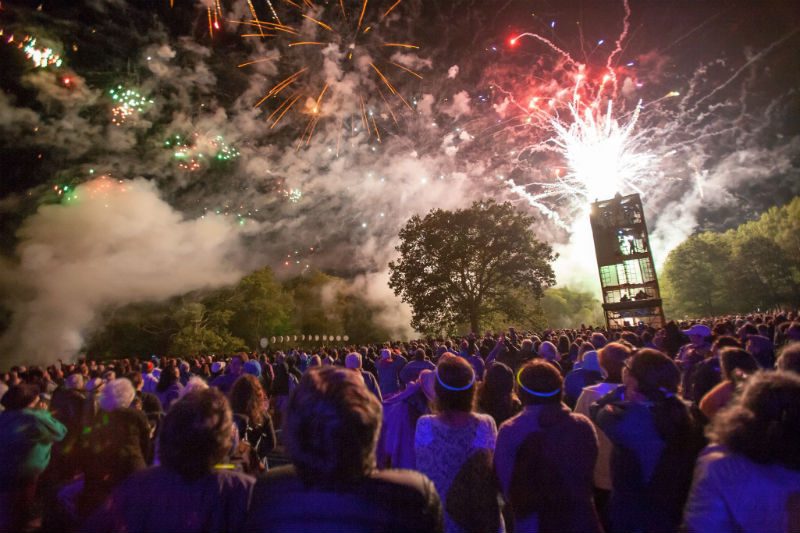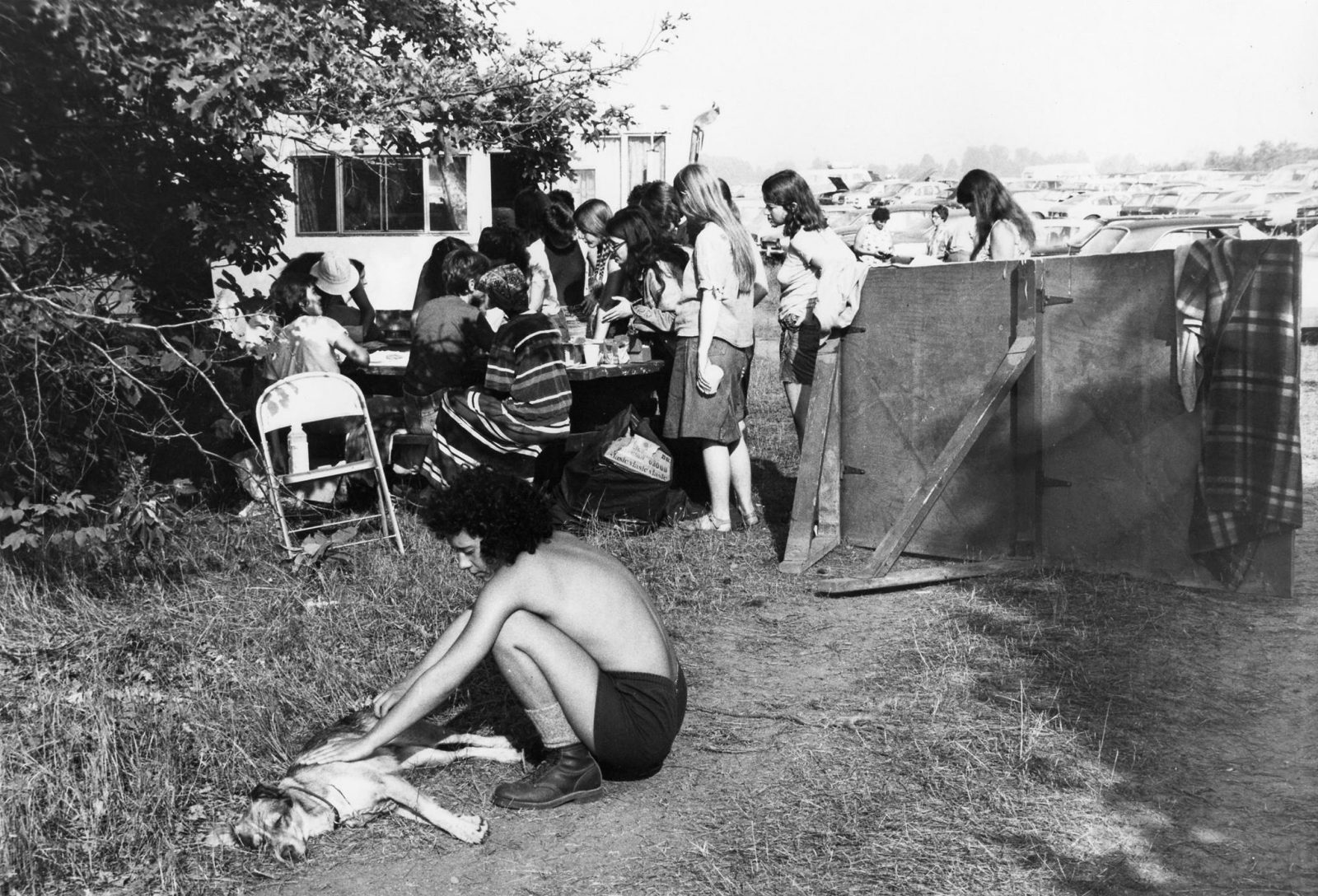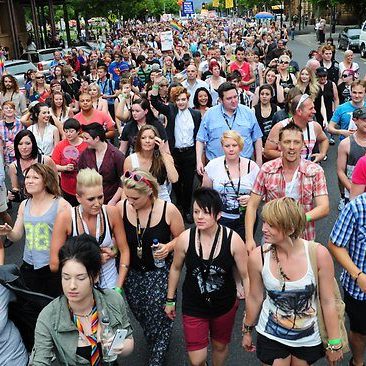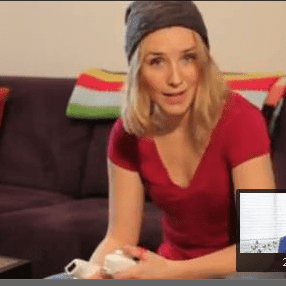 This ‘pink’ approach can take focus away from discussing the broader structural inequalities facing lesbian, queer women, and women of colour in the health care system.
This ‘pink’ approach can take focus away from discussing the broader structural inequalities facing lesbian, queer women, and women of colour in the health care system.
The Michigan Womyn’s Festival (or ‘MichFest’) has been held annually for the past forty years, across 650 acres of rural woodland in Michigan, USA. It is promoted as a women-only space – that is, created by and for women-born-women – and in this sense has been described as exclusionary (particularly for trans women).
Some have argued that MichFest reflects the worst excesses of second wave Western feminism and the political emphasis on woman-identified culture and lesbianism that emerged in the early 1970s. And yet, others have spoken about its ability – like other women-only spaces – to offer pleasure, empowerment and healing to women, and particularly to lesbians. While it hosts women with a diverse range of sexualities, its goal has been to provide the space to experience ‘what it feels like to be in a community defined by lesbian culture’ (michfest.com).
This is the dual history of Michigan Womyn’s Festival, an event which attracts an impressive number of women each year (over 3000), from the US and internationally, for a fully-catered seven days of camping, workshops, music, concerts, communal eating (the long lines at meal time are legendary!) and socialising. MichFest has also changed dramatically in the past twenty years, the catalyst being when in 1991 Nancy Burkholder, a transwoman, was asked to leave the site.
This sparked controversy and intense debates about the festival’s culture of exclusion. The festival organisers have since apologised on their website and state that they have made a ‘radical commitment to creating a space where for one week a year, no one’s gender is questioned’. They also acknowledge that historically ‘The MichFest community has always been populated by womyn who bear the burden of unwanted gender scrutiny every day’. However, tensions – and official boycotts – have pervaded MichFest, hence why this year was its last.
Gay Egg, a committee member of Sydney’s Pride History Group, attended Michigan Womyn’s Festival in August this year in the hope that it would be a particularly empowering and supportive experience – not only as a lesbian and a feminist, but as a woman who has had both breasts removed, in the space of three years, due to breast cancer. As Gay was already aware, lesbian feminist festivals and communities in Australia and elsewhere have often encouraged women to celebrate, challenge and explore their bodies, and walking around or dancing topless has not been uncommon for lesbians in such spaces.
And so, financially sponsored and encouraged by friends, including a lesbian activist and a trans man, she decided to make the expensive and long journey from Sydney to Michigan. Here she hoped to see and hear about the experiences of older lesbian women in particular, with their scars, wounds and stories of breast cancer displayed proudly, and in ways that are not typically represented in the mass media or public health campaigns. As Gay explained to me, she and other breast cancer survivors are concerned that the more well-known breast cancer awareness organisations in Australia and the US tend to use edited and overly ‘pink’ imagery, namely via pink ribbon promotions. This ‘pink’ approach can take focus away from discussing the broader structural inequalities facing lesbian, queer women, and women of colour in the health care system. Gay and others have also argued that there is still a great silence about the diverse experiences, identities and sexualities of women affected by breast cancer, and a lack of images in the public sphere that will confront people with the actual physical and emotional effects of breast cancer, its treatment and side effects.
Since the 1970s feminists and lesbians in Australia have been advocating for women to know and control their own bodies, starting clinics, holistic health centres and cancer resource centres.
In March 1975 Sydney feminists were discussing the need to increase government funding for breast cancer research, and to provide a more systematic support network for women who needed treatment. An article in the Australian feminist newsletter Mabel in the same year stated that a Mastectomy Rehabilitation Service had been established ‘to help women in this distressing situation’ and to put pressure on health funds to provide benefits for breast cancer treatment procedures.
Radicalised in this period as a lesbian feminist activist in Sydney, Gay Egg was acutely aware of how being a woman and a lesbian could affect her level of access to healthcare, physical autonomy and empowerment. She was therefore keen to find peers at MichFest who had shared her experiences. And yet, the level of breast cancer activism for lesbians she witnessed was minimal. She attended a Breast Cancer Awareness workshop with only five women in attendance, and the masses of topless, scar-bearing lesbians she had hoped to see throughout the festival seemed to be non-existent.
MichFest was however encouraging for Gay in other ways. In the week she camped there she observed the different ways lesbian feminist festivals and communities can empower women. She observed sign language interpreters at every workshop she attended, access provisions and a camping ground for women with disabilities (known as DART), ongoing shuttles throughout the site for those who could not walk the distance to events and a plethora of daily workshops on cultural and political topics including ‘Queer Yoga’ and ‘Dismantling Militarism.’
Her most valuable and transformative experience was also her most physical. In her tent on the Friday evening, Gay felt tired and somewhat malnourished (the catering was vegetarian, but according to Gay, this was unbalanced with minimal amounts of alternative proteins). She was suddenly approached by two Jewish lesbians who asked if they could share the space in her tent. Gay agreed, and the two women brought with them a large esky full of food (including a considerable amount of animal protein which they were about to prepare for Friday night Shabbat – Jewish Sabbath). Seeing how hungry Gay looked, the two women immediately offered their food, along with their friendship to Gay. The three women sat, ate and talked into the evening. This experience, Gay explained to me, was deeply healing and affirming.
Following this, Gay left Michigan and travelled to parts of Canada and North America, including San Francisco and Portland. Here she continued her search for breast cancer awareness groups that had a good grasp of lesbian issues and feminist politics. Gay was particularly thrilled to track down ‘Flattopper Pride’ (flattopperpride.org), a pioneering organisation that acknowledges the variety of ways cancer and oncological treatment are experienced across the gender and sexuality spectrum. Flattopper Pride also publishes photos on its website of lesbian and queer women who have had bilateral mastectomies, without reconstruction. These images are visceral, confronting, and important for raising awareness about breast cancer in all its guises.
Another activist group Gay came across is the San Francisco based organisation, ‘Breast Cancer Action’ (BCA), which for the past twenty-five years has encouraged the broader community to ‘Think before you Pink’.
They highlight that while pink ribbon promotions and their associated campaigns can be helpful in raising awareness about breast cancer to some extent, they tend to emphasise ‘individual risk and individual solutions’ (thinkbeforeyoupink.org/about-us/). As a watchdog organisation for the breast cancer movement, BCA state that their interventions will ‘ensure that fewer women develop breast cancer and die from breast cancer and no community bears a disproportionate burden of diagnosis or death from this disease.’ For lesbian women such as Gay, she knows how breast cancer can disproportionately affect lesbian communities, and it has been feminist activism and lesbian spaces that have given her the framework for empowerment and healing.


